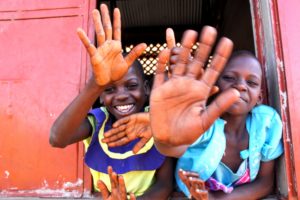
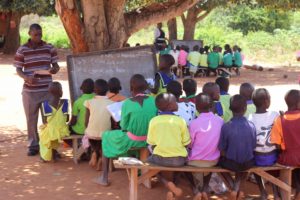
Prior to the construction of the BT Primary School of Kyambogo, students used to study under jack fruit trees, which carried with it many challenges.
Nestled in a farming community of Nakasongola District amongst rows of cassava, sweet potato, and maize, you will also find another resource under cultivation—children’s minds.
More than 280 students sit in seven classrooms and a nursery, and if you listen closely, you can hear the school’s choir practicing its songs over the shouts of children kicking a ball back and forth in their new courtyard.
The classrooms and students belong to the BT Primary School of Kyambogo, and if you came to this spot just one and a half years ago, you would not have seen this sight or heard these sounds.
Instead, you would have found seven jack fruit trees under which seven classes of students would be sitting, scribbling notes on notebooks in their laps, as desks remained a distant dream.
But you would not find them there every day. If you looked up and saw rainclouds on the horizon or felt drops hit your forehead as you approached, you could count on the students not being there, or sprinting, notebooks overhead like umbrellas, to the nearest house, as you arrived.
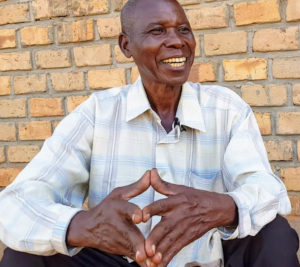
Stephen Tebalikoba, a father of five children at the BT Primary School of Kyambogo and chairman of its school management committee, has seen big improvements in his children since the school opened in 2017.
If you caught them on a sunny day, you would find them circling the tree, like a hungry lions circling their prey, just trying to swallow the day’s lessons while shifting a couple inches every few minutes to avoid the searing sun as it made its arc through the sky.
Today, however, the weather seems to matter less to the teachers and more to the farmers, as students sit protected within classrooms constructed with the hands and lands of their communities.
As Robert, the head teacher at the BT Primary School of Kyambogo explains, “At first, the students were learning under trees. But now we have the structures. Even if it is rainy season, we continue with our studies.”
In a country where the rainy season ends up comprising half of the year, from September until November and then March until May, this structural improvement is a big deal for school attendance and retention.
Moreover, beyond just having appropriate shelter, Stephen Tebalikoba, who was the chairman of the community’s Building Committee and now heads the school management committee, also says that the decreased walking distance to school has meant a lot to his family and as a consequence, he has seen big changes in his five children that he is very proud of. “Before,” Stephen explains, “the children were moving long distances. So they could not study well. But now that the school is close, they can attend their lessons easier.”
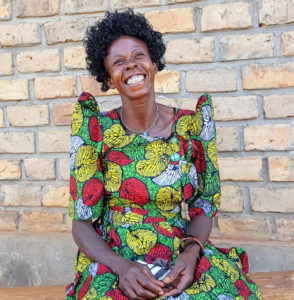
Jane Nakkiriza, a mother of five students at the BT Primary School of Kyambogo, played a huge part in mobilizing the community during construction and has benefited greatly from the school’s presence.
Jane Nakkiriza, a mother of five students at the BT Primary School of Kyambogo who also took part in the Building Committee, agrees with this assessment, as her home is now just two kilometers from the school. And she has also felt the impacts that the safe learning structures provide. “Before Building Tomorrow came,” she explains, “my children were suffering a lot. They were studying under trees, and when it rained, they would have to run and seek shelter at the nearby church.”
This, of course, is no longer the case, and in place of these struggles, a vibrant classroom and extracurricular life is emerging. With the structures for the school has also come a sense of identity, and its students now compete against other schools in the area with sports like soccer and netball and even through performances of the school choir.
The structures have also lead to an increased sense of pride, and parents now support the school through their presence at Parent-Teacher Association meetings and involvement on the school management committee, where issues such as the standard of teaching, learning environment, provision of school meals, and other important matters are discussed.
“The parents are now in support of the school,” Stephen explains,” because it was their greatest challenge for their children.”
Finally, the community has moved from studying underneath trees of fruit to enjoying the fruits of their labor.
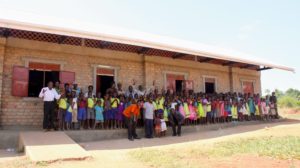

Follow Us on Social Media